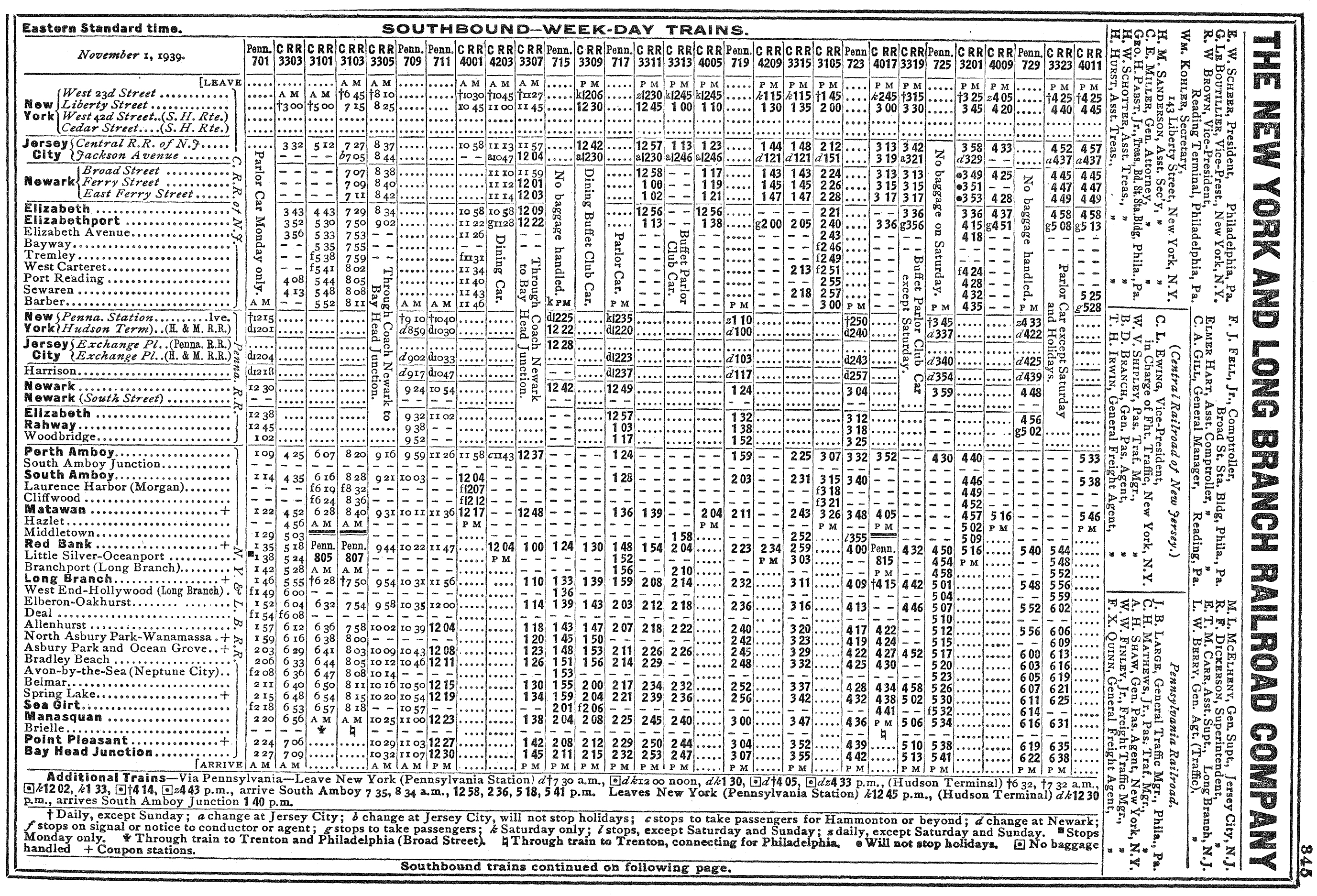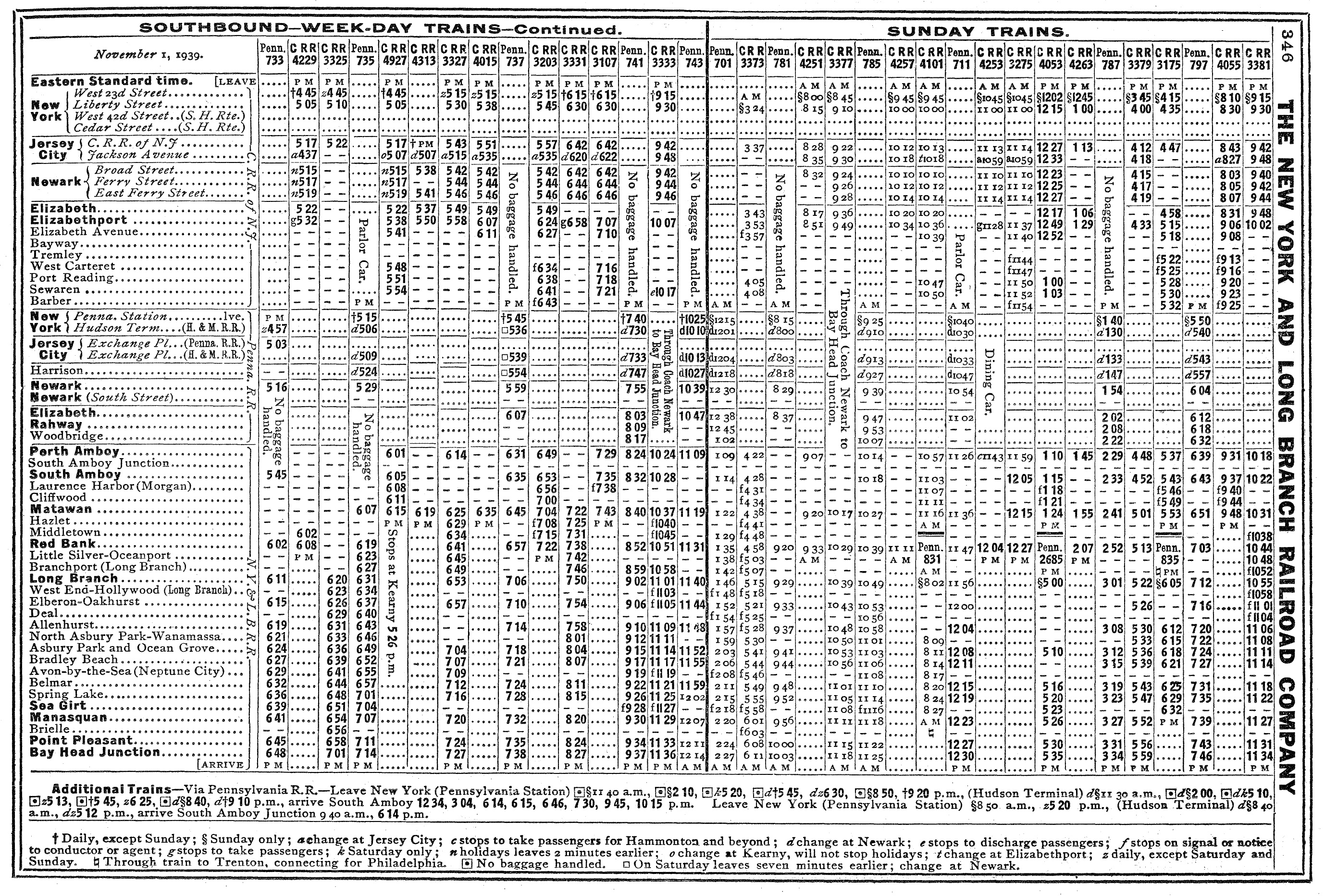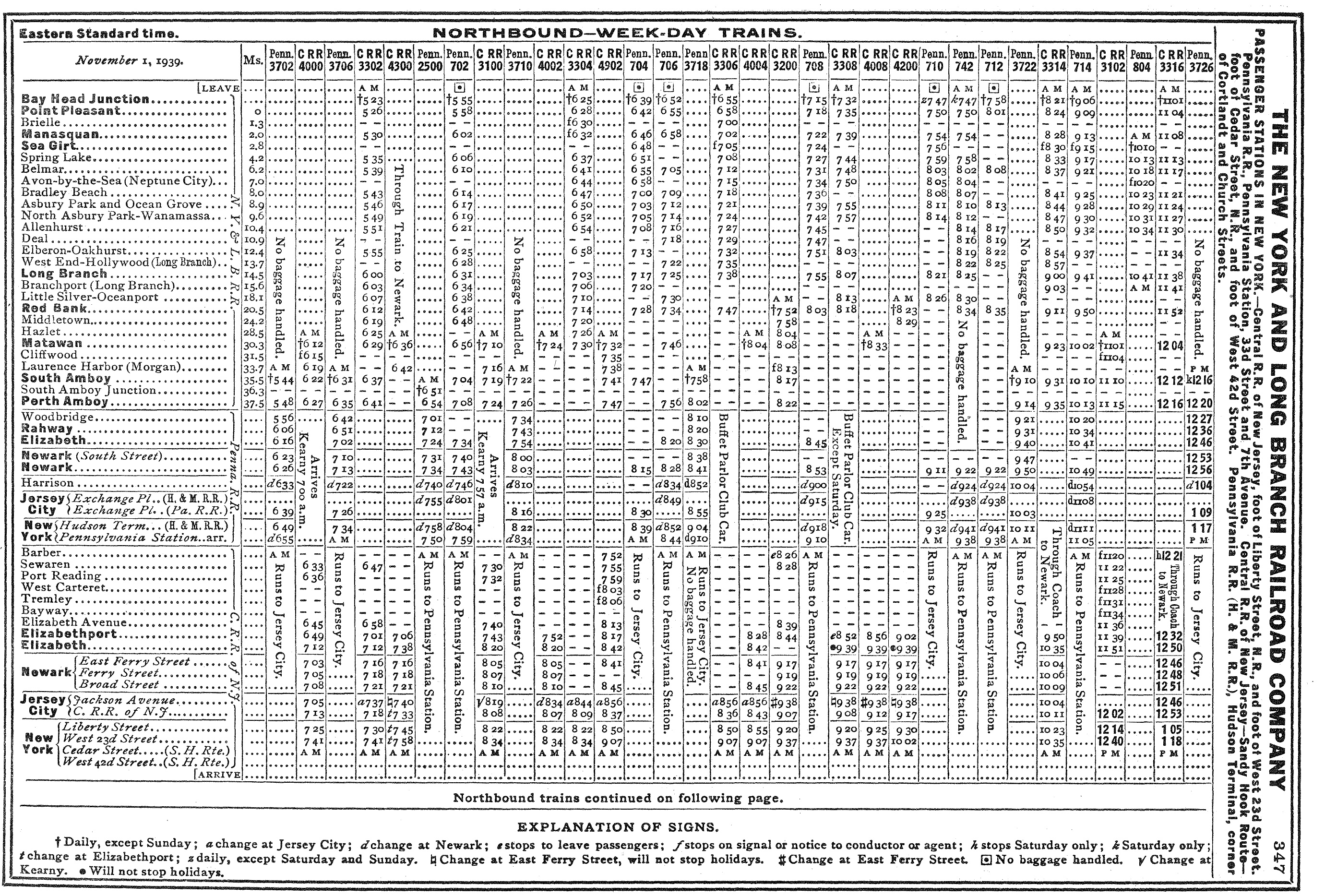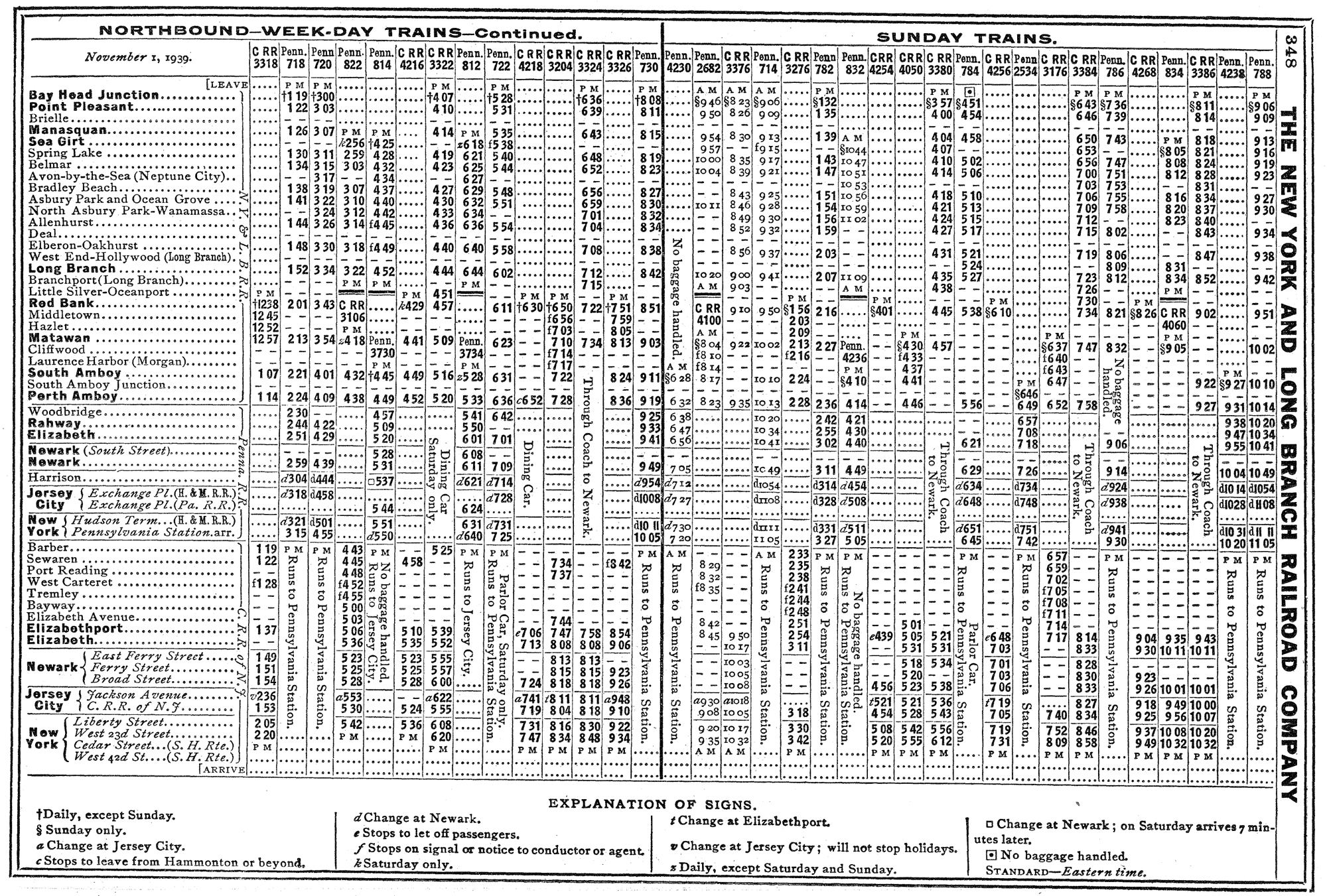New York and Long Branch Railroad: Timetables, History, Photos
Published: October 26, 2024
By: Adam Burns
The annals of railroad history are rich with stories of innovation, competition, and transformation. Among the noteworthy entries in this catalog is the New York and Long Branch Railroad (NY&LB), a line that not only connected key locations along the New Jersey coast but also played a crucial role in the suburbanization of the region while overcoming significant challenges posed by its geography and operational paradigms.
The NY&LB was never an indepedent corporate entity and never operated any of its own equipment. This system started at Bay Head Junction in Bay Head and ran up to Perth Amboy, where it linked with the Central Railroad of New Jersey's Perth Amboy and Elizabethport line.
Jointly owned and run by the Pennsylvania Railroad and the Central Railroad of New Jersey to largely handle commuter service throughout east-central New Jersey, it transitioned to Conrail ownership in 1976. Today, it is part of New Jersey Transit's North Jersey Coast Line.
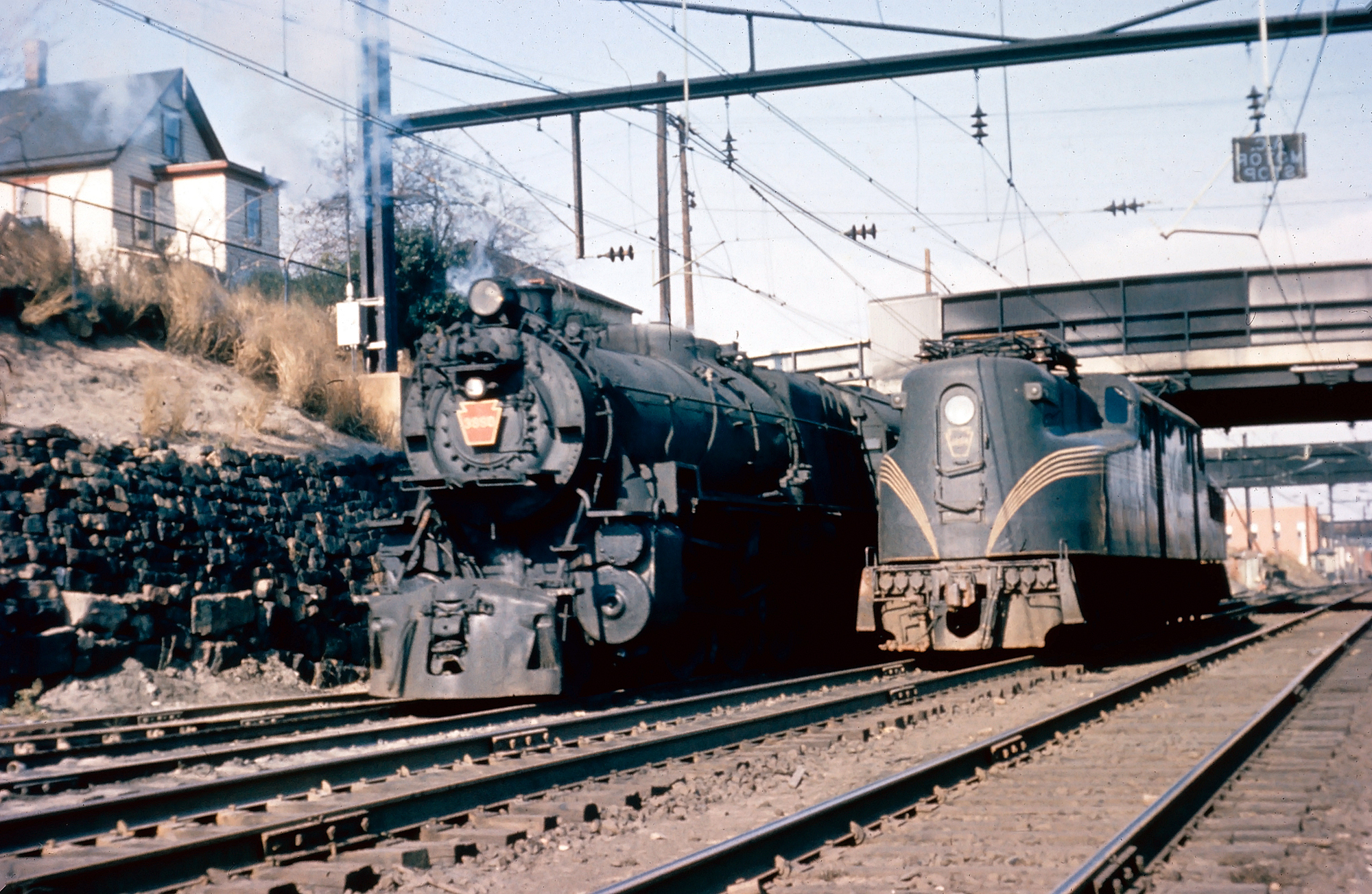 Pennsylvania 4-6-2 #3880 (K-4s) and GG-1 #4884 on the New York & Long Branch at South Amboy, New Jersey, circa 1955. Meyer Pearlman photo. American-Rails.com collection.
Pennsylvania 4-6-2 #3880 (K-4s) and GG-1 #4884 on the New York & Long Branch at South Amboy, New Jersey, circa 1955. Meyer Pearlman photo. American-Rails.com collection.Genesis and Strategic Importance
The origins of the New York and Long Branch Railroad trace back to the mid-19th century, a period characterized by rapid industrial growth and an expanding urban sprawl. The bustling metropolis of New York City, with its overflowing port and burgeoning population, looked towards the natural beauty and potential development of the Jersey Shore as a natural outlet for its growth.
Incorporated on April 8, 1868, the NY&LB was conceived with a clear mission: to connect the major cities of New Jersey's Monmouth County with the economic heart of New York City.
This goal aligned with the broader aspirations of regional development, providing both passenger and freight services to support burgeoning beach resorts and local industries.
By 1875, the rail line extending from Perth Amboy to Long Branch was completed. On December 20, 1881, several railroads were merged into the NY&LB which included:
- The New Egypt & Farmingdale Railroad was incorporated on March 17, 1869. Its tracks reached from Long Branch to Belmar in 1876, though the rest of the line to New Egypt was never completed.
- The Long Branch & Sea Girt Railroad, incorporated on June 18, 1875, constructed its line from Belmar to Sea Girt in 1876.
- The New York & Long Branch Extension Railroad was founded on March 10, 1880, and built its line from Sea Girt to Point Pleasant that same year.
- The Long Branch & Barnegat Bay Railroad, established on September 23, 1880, laid tracks from Point Pleasant to Bay Head Junction by 1881.
Initially, the railroad was under a lease to the CNJ, while the PRR had intentions of developing a parallel track, the Perth Amboy and Long Branch Railroad. However, an agreement on January 3, 1882, divided the ownership between CNJ and PRR, allowing trackage rights for both across the entire line.
Economic, Social, and Cultural Impact
The NY&LB's construction and operation marked a significant shift in the socio-economic landscape of the New Jersey coast. It transformed previously isolated beach towns into thriving seaside resorts frequented by wealthy New York residents. The easy access afforded by the railroad spurred real estate development, giving rise to an array of Victorian-style homes and seaside settlements.
Beyond tourism, the NY&LB was instrumental in boosting local industries. Agricultural producers and manufacturers benefited from new markets opened up by fast and reliable rail connections. Consequently, towns like Long Branch and Asbury Park evolved into economic and cultural hubs, with the railroad at the core of this transformation.
Timetables (1940)
Decline and Modern Era
In the mid-20th century, the predominance of rail travel began to wane with the rise of the automobile and the creation of an extensive highway network. Passenger numbers on the NY&LB dwindled, reflecting a nationwide shift in transportation preferences. However, strategic foresight allowed the railroad to persist, thanks in part to its adaptation focused largely on freight operations and commuter rail services.
The formation of New Jersey Transit in the late 1970s, a dedicated agency for managing the state’s rail services, ensured the line's survival and continued relevance. Under NJ Transit's stewardship, the NY&LB was revitalized, maintaining critical commuter rail services that have stood the test of time, connecting dense suburban populations to New York City.
Contemporary Operations
Presently, the NY&LB is operated by NJ Transit, providing essential commuter services along its route, branded as part of the North Jersey Coast Line. The line continues to undergo modernization efforts that include electrification and infrastructure upgrades aimed at improving efficiency and service standards.
Looking forward, the NY&LB stands poised at the center of discussions concerning sustainable transportation. As communities and policy-makers push for greener transit solutions, the railroad's ability to move vast numbers of people efficiently and with lesser environmental impact is being lauded as a critical asset.
Conclusion
The story of the New York and Long Branch Railroad is not simply one of steel and steam, but of an enduring link between a thriving metropolis and its burgeoning coastal retreats. It is a narrative of how ingenuity and persistence in the face of competition and change can help create a lasting legacy.
Through its various incarnations—from a passenger lifeline for vacationers and locals, to an integral part of New Jersey Transit's commuter network—the NY&LB continues to epitomize the adaptability and enduring relevance of railways in American history. It is a testament to the transformative power of rail, bridging distances and connecting communities, while dynamically adapting to the ever-changing landscapes of technology and urban life.
Recent Articles
-
Nevada - Murder Mystery - Dinner Train Rides
Dec 14, 25 12:40 PM
Seamlessly blending the romance of train travel with the allure of a theatrical whodunit, these excursions promise suspense, delight, and an unforgettable journey through Nevada’s heart. -
West Virginia - Murder Mystery - Dinner Train Rides
Dec 14, 25 12:32 PM
For those looking to combine the allure of a train ride with an engaging whodunit, the murder mystery dinner trains offer a uniquely thrilling experience. -
Kansas - Murder Mystery - Dinner Train Rides
Dec 14, 25 11:02 AM
Kansas, known for its sprawling wheat fields and rich history, hides a unique gem that promises both intrigue and culinary delight—murder mystery dinner trains.

